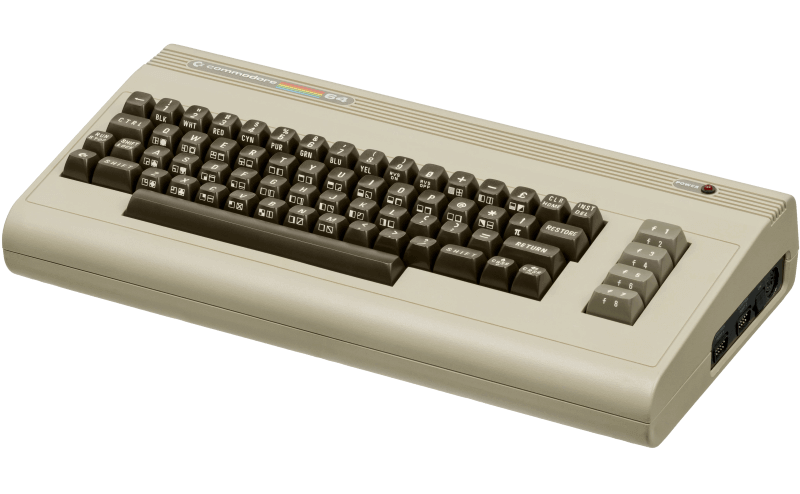Commodore 64

Made in USA by Commodore in 1982
6921
games
13unreleased
Released games per year
Units sold: 30 000 000
Launched in 1982, officially discontinued in 1993.
The Commodore Max was the predecessor to the Commodore 64. It was the first computer to have VIC II and SID chips (these being a split/upgrade of the original VIC chip). It only had 2K, cartridge port, cassette port, RF out, and a membrane keyboard. But, it did have two joystick ports. It was sold in Japan (Max) and Germany (VC-10) and USA (Ultimax) but only Japanese Max machines are known to exist today. It was quickly replaced with the Commodore 64 which is 100% backwards compatible. The Commodore 64 in fact has an undocumented (and unnecessary) Max compatibility mode. This mode is exploited by the Action Replay and some other cartridges. All Max games and accessories will work with the Commodore 64.
#
Launched in 1982, officially discontinued in 1993.
The Commodore Max was the predecessor to the Commodore 64. It was the first computer to have VIC II and SID chips (these being a split/upgrade of the original VIC chip). It only had 2K, cartridge port, cassette port, RF out, and a membrane keyboard. But, it did have two joystick ports. It was sold in Japan (Max) and Germany (VC-10) and USA (Ultimax) but only Japanese Max machines are known to exist today. It was quickly replaced with the Commodore 64 which is 100% backwards compatible. The Commodore 64 in fact has an undocumented (and unnecessary) Max compatibility mode. This mode is exploited by the Action Replay and some other cartridges. All Max games and accessories will work with the Commodore 64.
#
tech info
resolution: 320 x 200 x 16 colorsmemory: 52K RAM, 20K ROMCPU: 6510sound: 6581 SIDAll Commodore systems
| Commodore PET | 1977 |
| VIC-20 | 1981 |
| Commodore 64 | 1982 |
| Commodore 16/Plus 4 | 1984 |
| Amiga OCS | 1985 |
| Commodore 128 | 1985 |
| Amiga AGA | 1992 |
| Amiga CD32 | 1993 |


